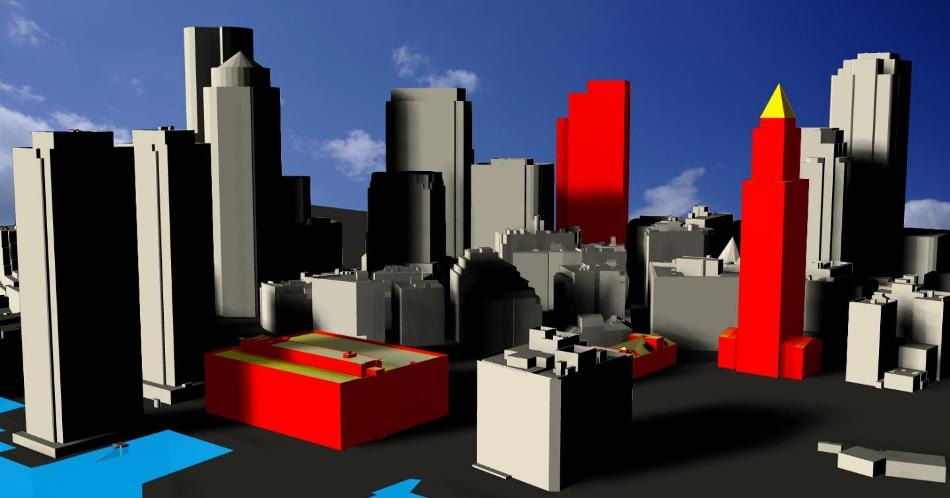Feb 5 2019
Scientists at TU Delft have developed a new method for calculating solar energy potential of surfaces in the urban setting in a fast and accurate manner. The new method can greatly help architects and urban planners to integrate photovoltaic (solar power) technology in their designs. The findings were published in the February 4th issue of Nature Energy.
 The work carried out at the PVMD group can be used to calculate the solar photovoltaic energy potential of buildings in complex urban landscapes. The image shows results of the model applied to selected façades and roofs of buildings in the city of Boston, Mass. Roofs are painted with brighter colors than façades which indicates a higher energy potential. Base 3D model by Boston Planning & Development Agency is licensed under CC BY 3.0. (Image credit: Boston Planning & Development Agency)
The work carried out at the PVMD group can be used to calculate the solar photovoltaic energy potential of buildings in complex urban landscapes. The image shows results of the model applied to selected façades and roofs of buildings in the city of Boston, Mass. Roofs are painted with brighter colors than façades which indicates a higher energy potential. Base 3D model by Boston Planning & Development Agency is licensed under CC BY 3.0. (Image credit: Boston Planning & Development Agency)
Trees, buildings, and other structures in urban areas cause shading of solar modules, which greatly affects the performance of a PV system. Accurate evaluation of this performance, and the associated price/performance of PV systems, will facilitate their incorporation into the urban environment.
A number of tools are available for mimicking the energy yield of PV systems. These tools are based on mathematical models that establish the irradiance incident on solar modules. By doing the calculation of the incident irradiance repetitively all through the year, the tools can deliver annual irradiation received by the modules. However, it is not easy to establish accurately the amount of electricity a PV system produces in an urban setting. Current simulations become computationally extremely challenging, as the dynamic shading of surrounding objects caused by the yearly movement of the sun has to be taken into consideration.
Two parameters
A new method streamlines the calculation and allows the user to perform a quick assessment of the solar energy potential for large urban areas while maintaining high accuracy. It is based on a correlation between a skyline profile and the annual irradiation received at a specific urban site. This technique is described and validated in a research published in Nature Energy journal. The research shows that the total annual solar irradiation received by a selected surface in an urban setting can be quantified using two factors that are derived from the skyline profile: the sun coverage factor and the sky view factor. The first factor is used to estimate the irradiation from the diffuse sunlight component, and the second one is suggestive of the irradiation from the direct sunlight component. These two parameters can be easily and rapidly gotten from the skyline profile. The research reveals that the use of these two parameters considerably decreases the computational complexity of the issue.
Software toolbox
Andrés Calcabrini, PhD student in the Department of Electrical Sustainable Energy developed the new method under the direction of Dr Olindo Isabella and Professor Miro Zeman. The Photovoltaic Materials and Devices (PVMD) group has already incorporated the method in a software toolbox that can accurately measure the energy yield of PV systems at any site.
Our fast approach integrated in software tools for calculating the solar energy potential can significantly facilitate design and distribution of buildings with integrated PV systems in urban planning frameworks. It will also help investors to take decisions on integrating PV systems in buildings and other urban locations.
Olindo Isabella, Head, PVMD group
This study has been performed as a part of the Solar Urban programme of Delft University of Technology.